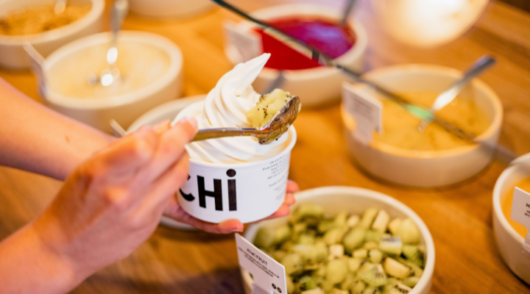Deliveroo has partnered with Singaporean supermarket chain Sheng Siong, bringing more than 5000 grocery essentials, including fresh produce, pantry essentials and household goods, onto the platform. This partnership is a strategic response to evolving consumer demands, with the grocery delivery market projected to grow by 18.1 per cent in revenue by next year. Jason Parke, general manager of Deliveroo Singapore, spoke to Inside Retail about the strategy behind the partnership, evolving consumer
er expectations, and how technology is shaping the future of grocery delivery.
Inside Retail: What led to the decision to form this exclusive partnership between Deliveroo and Sheng Siong?
Jason Parke: Our exclusive partnership with Sheng Siong is a strategic response to evolving consumer habits, where consumers are increasingly looking beyond ready-to-eat meals and relying more on delivery platforms for their daily essentials as and when they need it, instead of usual grocery runs/orders.
As Sheng Siong’s first exclusive on-demand delivery partner, we complement their e-commerce service with a seamless, 24/7 grocery solution — giving consumers faster, more convenient access anytime, anywhere.
IR: How do you see consumer behaviours evolving in the grocery delivery space in Singapore?
JP: Consumer behaviour in grocery delivery is shifting toward speed, convenience and immediacy. Increasingly, it is evolving from convenience to a necessity, offering faster, more flexible solutions to meet modern lifestyles.
A survey by Insead found that 80 per cent of consumers in Southeast Asia want same-day delivery, and 61 per cent expect their orders within three hours. Deliveroo’s Consumer Survey further complements this, revealing that 53 per cent of respondents are expanding their usage beyond food to grocery, retail, and gifting.
This shift is largely driven by time-sensitive needs and the demand for instant access – with 47 per cent of consumers using delivery when short on time and 43 per cent turning to it for urgent purchases.
The ability to get what they need, when they need it, with real-time tracking makes on-demand grocery delivery an increasingly preferred choice over traditional e-commerce.
IR: What are the biggest pain points for grocery shoppers that this partnership aims to solve?
JP: Many shoppers struggle with long delivery wait times, stock availability and last-minute needs. Traditional e-commerce requires advance planning and can take days for orders to arrive, making it impractical for urgent essentials like fresh produce and household items.
Our partnership with Sheng Siong eliminates long wait times by offering on-demand grocery delivery in as fast as 30 minutes, tapping on our robust delivery network. This works especially well for last-minute grocery needs.
With 21 Sheng Siong outlets already onboard and plans to expand to 30, we’re improving product availability and accessibility islandwide while ensuring access to high-quality essentials at affordable prices.
IR: How does Deliveroo’s technology integrate with Sheng Siong’s inventory systems to ensure real-time stock accuracy? Will there be further investments in infrastructure or technology to support this collaboration?
JP: Deliveroo’s technology uses data-driven insights to track customer searches and preferences, helping us understand which products are in demand.
This feedback loop enables agile inventory management, allowing Sheng Siong to quickly adjust and ensure they stock the most popular items. Through this integration, we’re able to maintain real-time stock accuracy, providing customers with a seamless shopping experience and reducing the risk of stockouts.
Deliveroo’s backend system also allows partners to easily manage the menu listing as well.
We will continue to refine our technology as our goal is to continuously improve the shopping and delivery experience for customers while empowering our partners with smarter tools for enhanced efficiency.
IR: What logistical challenges did you have to address to ensure smooth deliveries from Sheng Siong stores via Deliveroo? Can you elaborate on how Deliveroo’s rider network is adapting to handle grocery deliveries efficiently?
JP: Our proprietary Frank algorithm matches orders with riders in real-time, optimising factors like location, traffic and order duration to ensure maximum efficiency. This allows riders to reach the nearest store within our hyper-local network of stores and fulfilment hubs. Unlike traditional last-mile delivery, this system ensures fast, 30-minute deliveries island-wide, at any time of the day.
We also use data analytics to balance rider supply and demand, ensuring the right number of riders are available at the right time. This provides instant gratification with live tracking, so customers know exactly when to expect their deliveries.
IR: In the long run, how do you see the grocery delivery segment evolving, and what role will partnerships like this play in shaping the industry?
JP: We see the grocery delivery segment evolving towards a more integrated and versatile service, where delivery platforms become central to consumers’ daily shopping habits, not just for food but for a broader range of essentials. This evolution will rely on leveraging technology, data insights and strategic partnerships to continuously meet consumer demand and improve accessibility.
Partnerships like ours with Sheng Siong are key in shaping this future, allowing us to work together to offer customers a wider variety of products, streamline operations and reach new audiences. As we continue to evolve, we’re becoming a one-stop commerce hub, playing an essential role in how consumers shop for both everyday necessities and other retail needs – while helping our partners reach new customers.
Further reading: Deliveroo Singapore’s MD Jason Parke on the company’s retail arm launch.





